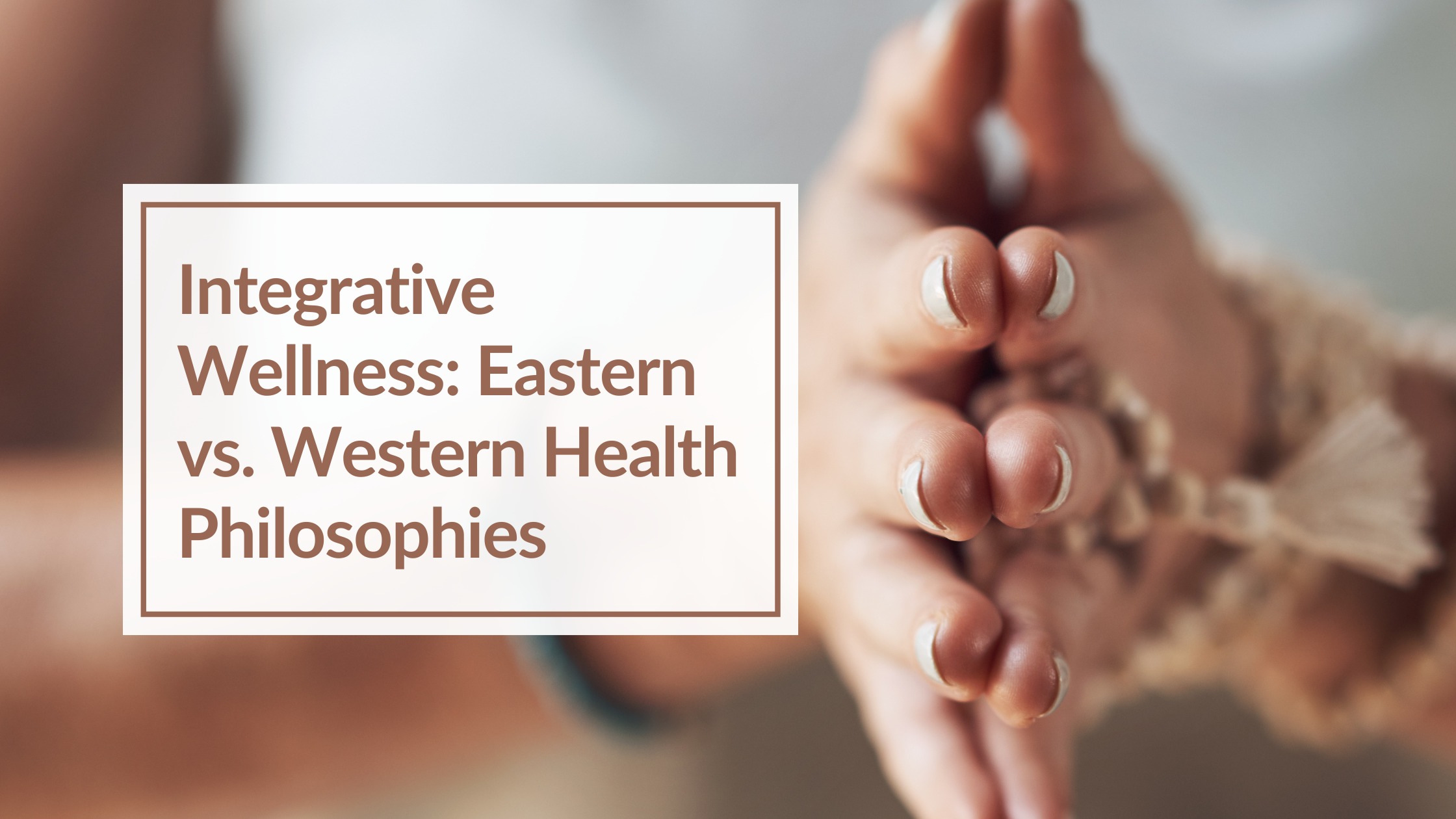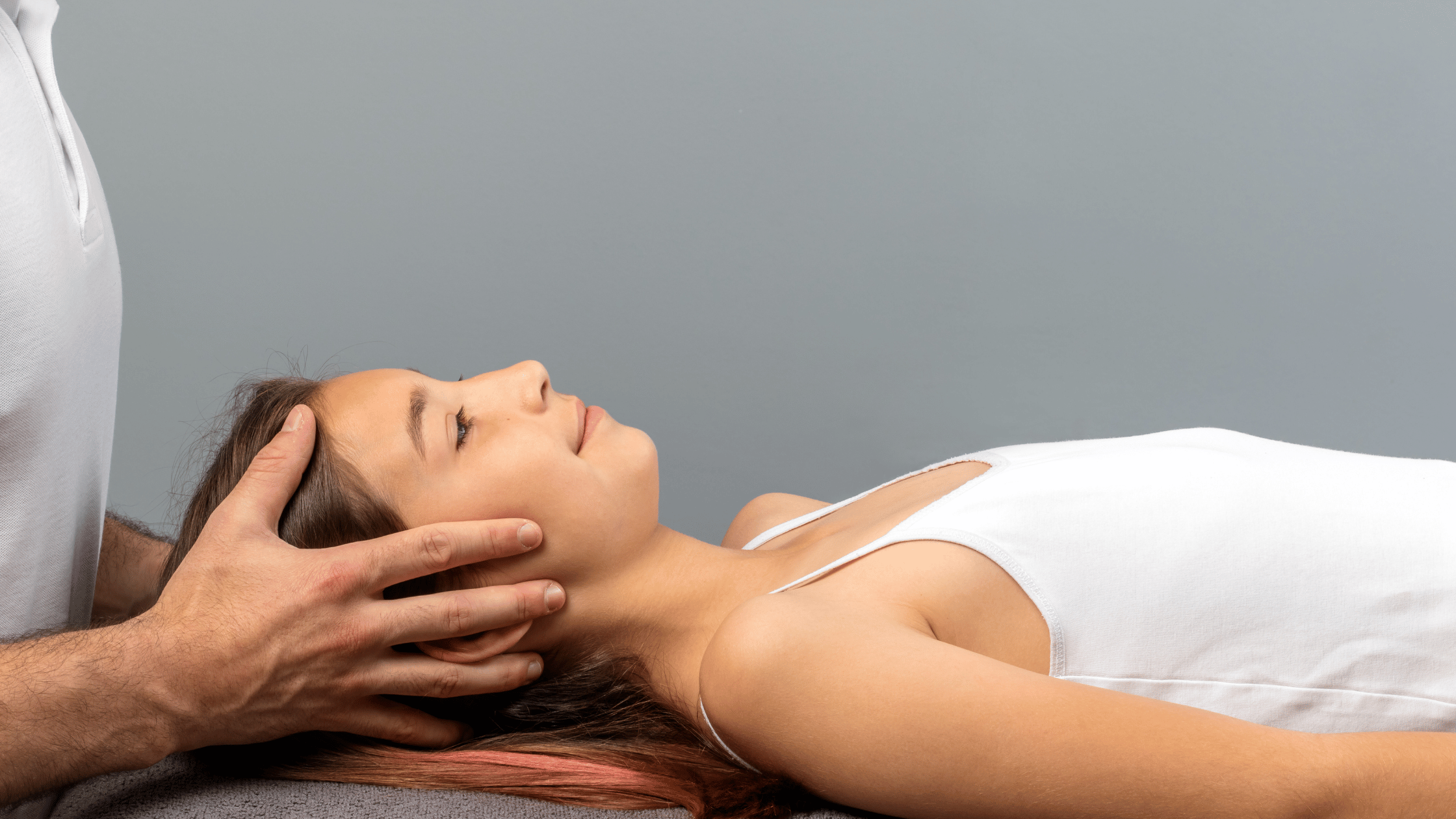
Integrative Wellness and the Eastern vs. Western Philosophies
In the world of integrative wellness, it’s common to hear phrases like “energy flow,” “Qi,” or “mind-body connection” right alongside discussions about lab work, diagnoses, and pharmaceuticals. The conversation around Eastern vs. Western medicine highlights two distinct frameworks, each reflecting contrasting yet increasingly complementary approaches to health.
For integrative wellness practitioners and individuals committed to natural health, understanding both paradigms can expand your ability to support holistic wellness in today’s ever-changing landscape.
Complementary, Alternative, Integrative, and Functional Labels: What’s the Difference?
Some definitions of a combined approach to wellness seem interchangeable: alternative, complementary, functional, and integrative wellness are words applied to holistic health philosophies. Are they all the same? No.
According to the National Center for Complementary and Integrative Health:
- Complementary approaches involve using Eastern or non-mainstream methods alongside Western medicine. Think nutritional interventions, mindfulness, or osteopathy. The versus is removed from the Eastern vs. Western comparison.
- Alternative refers to something that is used in place of or instead of Western medicine or conventional treatment. These are often ancient practices like herbal medicine, acupuncture, and Reiki. Some are used as a stand-alone practice, others get woven into complementary frameworks.
- Functional medicine, or the functional approach, looks for a root cause and the potential to turn around or reverse disease. Practitioners look at the body through interconnectedness. Form influences function and vice versa.
- Integrative wellness combines two or more approaches, often bringing multiple practitioners together to support the whole person.
Examples of Integrative Wellness Practitioners
Both licensed and certified individuals can be integrative wellness practitioners. Additional training in holistic and alternative therapies combined with medical training can make one an integrative practitioner. Certified individuals may be wellness coaches trained in behavior change and other complementary practices. This list can include those who do not pick a side in the Eastern vs. Western debate, such as:
- Naturopathic doctors
- Chiropractors
- Osteopaths
- Holistic or functional nutritionists
- Integrative Dieticians
- Energy healers
- Bioenergetic practitioners
- Ayurvedic practitioners
- Mind-body therapists
The Eastern Approach: Energy, Balance, and Prevention
Eastern health philosophies are foundational to integrative wellness, and the term originates with Traditional Chinese Medicine (TCM), named for its part of the world, Eastern China.
The Eastern term has evolved, and many encompass Ayurveda, homeopathy, and other ancient systems such as yoga and mindfulness into this approach. These ancient practices take a broad, interconnected view of the human body. At the core is the concept of vital life force, known as Qi in TCM and Prana in Ayurveda. This energy flows through the body in pathways (like meridians or nadis), and health depends on its smooth, balanced flow.
Key Principles:
- Health results from harmony between body, mind, spirit, and environment.
- Disease is caused by energetic imbalance, stagnation, or depletion.
- Emotions are not separate from physical health; they influence organ function and energetic flow. Shamanic healing recognizes something called “soul loss,” which happens when one experiences a traumatic event.
- Maintaining balance is central: daily practices (like breathwork, herbal remedies, and a supportive diet) are used to keep the vital life force or energy in homeostasis.
Eastern systems often use tools like pulse reading, tongue diagnosis, and energetic testing to assess subtle imbalances before symptoms become disease.
The Western Approach: Diagnosis, Structure, and Intervention
Western medicine evolved through the scientific method, emphasizing a more reductionist, evidence-based model. It prioritizes identifying specific pathologies, measurable through tests, and treating them with targeted interventions. Ancient Greece is credited with contributions to medical science because of the contributions of Hippocrates and Galen, both physicians.
Key Principles:
- The body is viewed in systems and parts (e.g., cardiovascular, neurological).
- Goals include curing disease, diagnosing, and preventing illness.
- Health is the absence of disease, and disease is a dysfunction in structure or chemistry.
- Diagnosis is often based on symptoms, lab results such as blood work, and imaging.
- Treatment focuses on external intervention: medication, surgery, or therapy.
This approach is helpful in emergency medicine, acute care, and surgical intervention. It’s also strong in diagnostics, precisely identifying conditions once symptoms have manifested.

Eastern vs. Western Medicine: Bridging the Gap with Integrative Wellness.
Today’s wellness leaders recognize that the best outcomes often come from combining the strengths of both Eastern and Western philosophies.
As a practitioner, recognizing when to lean on Eastern philosophies (e.g., supporting emotional resilience, addressing subtle energetic patterns, potentially with testing) and when to use Western tools (e.g., diagnostics, acute care referral) expands your effectiveness and increases your client’s well-being.
Your skills in communication and networking with other practitioners can be one of your strongest assets. Understanding test results, paired with your client assessment, allows you to create a wellness team or to pull from your training to support your client.
For those interested in the integrative approach, learning more about Eastern philosophies and how they fit within the Western approach provides an opportunity for true holistic care.
How Practitioners Can Blend Both:
- Use bioenergetic testing to assess subtle imbalances early and support lifestyle adjustments.
- Refer out for lab work or imaging when red flags emerge.
- Understand when a psychological referral may be necessary (eating disorders, complex trauma).
- Educate clients on the role of stress, emotions, and energy in physical health.
- Introduce stress reduction practices and bioenergetic exercises like daily movement, grounding, and breathwork alongside more structured wellness plans.
Ready to Blend Eastern vs Western Philosophies?
Eastern vs. Western philosophies are not at odds — they are two sides of the same coin. When you understand both, you’re better equipped to meet your clients where they are, offer personalized support, and cultivate deeper, longer-lasting results. In today’s evolving wellness world, the most impactful practitioners can bridge science and spirit, structure and flow, lab work and life force.
Want to learn how subtle energetic tools can help you grow your wellness practice and deepen client results? Let’s talk about bioenergetic testing. It’s easier (and more grounded) than you think.

